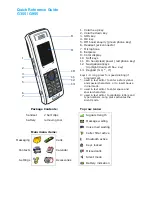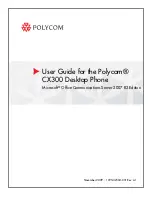
Sect
ion 12
172
•
Updated 7/16/2003: US food and Drug Administration
http://www.fda.gov/cellphones
Road Safety
Your wireless phone gives you the powerful ability to
communicate by voice, almost anywhere, anytime. But an
important responsibility accompanies the benefits of
wireless phones, one that every user must uphold.
When driving a car, driving is your first responsibility.
When using your wireless phone behind the wheel of a
car, practice good common sense and remember the
following tips:
1.
Get to know your wireless phone and its features, such
as speed dial and redial. If available, these features help
you to place your call without taking your attention off
the road.
2.
When available, use a hands-free device. If possible, add
an additional layer of convenience and safety to your
wireless phone with one of the many hands free
accessories available today.
3.
Position your wireless phone within easy reach. Be able
to access your wireless phone without removing your
eyes from the road. If you get an incoming call at an
inconvenient time, let your voicemail answer it for you.
4.
Let the person you are speaking with know you are
driving; if necessary, suspend the call in heavy traffic or
hazardous weather conditions. Rain, sleet, snow, ice and
even heavy traffic can be hazardous.
Summary of Contents for A970 - SCH Cell Phone
Page 4: ...DAMAGES OR LOSS OF ANTICIPATED PROFITS OR BENEFITS ...
Page 50: ...50 Section 3 ...
Page 58: ...Section 4 58 ...
Page 64: ...64 Section 5 ...
Page 78: ...78 Section 6 ...
Page 122: ...Section 8 122 ...
Page 140: ...140 Section 9 ...
Page 152: ...152 Section 10 ...
Page 158: ...158 Section 11 ...
Page 192: ...192 Section 13 ...
















































